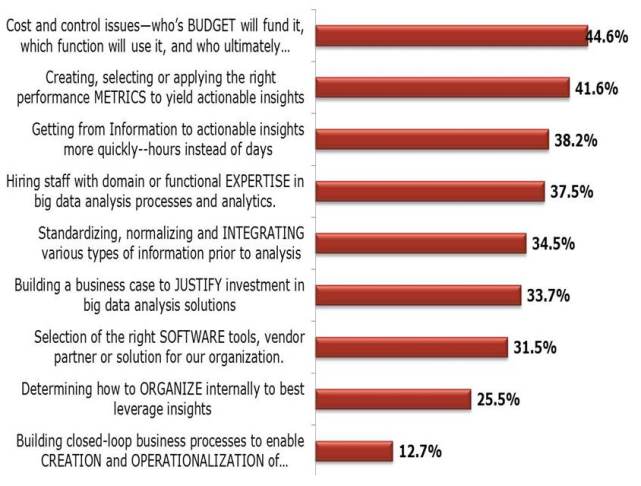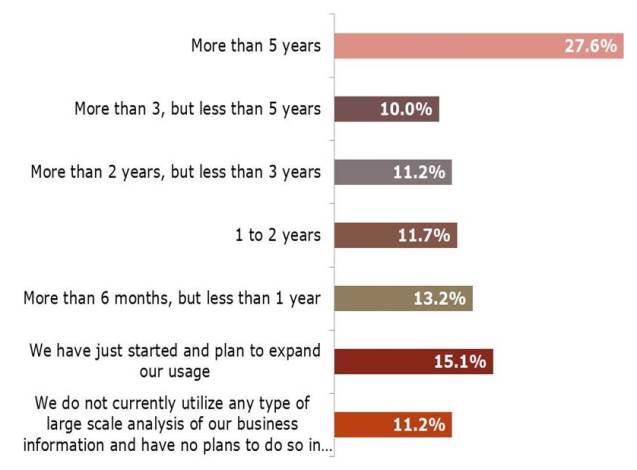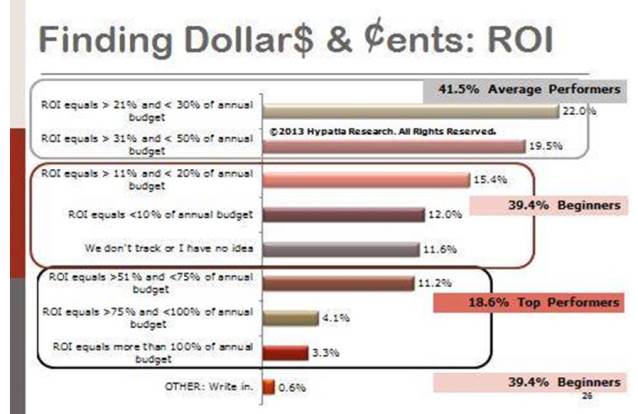Partners waltzing in triple time with four feet require grace and precision. Similarly, creating an effective Big Data Analytics ecosystem demands dexterity coupled with speed and accuracy. Instead of four feet dancing in triple time, enterprise-level Big Data Analytics (BDA) encompasses numerous information sources, multiple technologies (software and hardware), nimble business processes and specialized human expertise in advanced analytics.
Enterprise issues
Creating an enterprise-level ecosystem that will support effective analysis and operationalization of BDA insights is one of several challenges organizations currently face. While data scientists often cite the statistic that 70-80 percent of their time is spent on preparing a variety of data from numerous sources (structured, contextual and/or video information) for analysis, the top priorities for most organizations center on:
- Which department will benefit?
- Which role or team is accountable for creating insights quickly?
- What performance metrics and processes will be utilized to yield actionable results?
- Ultimately, whose budget will fund it?
“Do it big, do it right and do it with style.”(Fred Astaire)
Exploiting the value inherent in the analysis of continuously increasing volumes of Big Data is not new. For at least the last 10 years, companies within industries such as financial services, insurance, consumer goods, entertainment, travel and hospitality have engaged marketing and business services providers (e.g., Acxiom, Epsilon, Experian, dunnhumby and Merkle) to guide them in understanding, profiling, targeting and influencing customers to purchase their goods and services.
Figure 1: Top Three Big Data Analysis Challenges

© Hypatia Research Group, LLC. All Rights Reserved.
Nearly 50 percent of companies have utilized analysis of Big Data for more than two years, and, of the 27.6 percent with more than five years of usage, 89 percent of these companies outsourced their initiatives to a marketing services provider or managed services provider with domain expertise.
Figure 2: Timeframe of Big Data Analytics Initiatives

© Hypatia Research Group, LLC. All Rights Reserved.
However, early results from our research demonstrate that successful organizations do benefit from significant double-digit downstream business benefits as well as operational cost take-outs. In years one through four, between 69-84 percent of organizations realized between 20-50 percent annual return on investment (ROI), with top performers cited attaining an ROI of greater than 50 percent on an annual basis (percent based on ROI realized by all respondents surveyed across an aggregated timeframe).
A deeper analysis shows that these top performers benefit from greater sophistication, maturity of experience and discipline in employing analytical BDA techniques, software and processes in ways that impact the business. Rather than taking an opportunistic or laboratory approach, these companies are more likely to create corporate, operational and/or tactical objectives, align performance metrics with goals and prioritize their focus on specific business use cases.
Figure 3: Sophistication, Accuracy, Speed & Maturity Impact ROI

© Hypatia Research Group, LLC. All Rights Reserved.
Research approach
Our analysis of 436 Fortune 500 (defined as greater than $4.5 billion in revenues) executives that actually utilize, recommend, influence, hold budget or veto power over the purchase of BDA or business intelligence software provides contrarian insight into how and why large organizations:
- Invest in BDA software solutions
- Prioritize software selection criteria
- Utilize a wide variety of informational sources
- Measure productivity and effectiveness of BDA initiatives
- Enhance accuracy and reliability of results
- Realize downstream business benefits
Our assessment
At present, few organizations are waltzing with the precision and accuracy of Fred Astaire and Ginger Rogers; however, those that are successful realize significant downstream business benefits as well as operational cost take-outs.
Driven by the convergence of business at the speed of light (Business at the Speed of Thought, William H. Gates III, 1999) requirements — such as ever-increasing competition for market-share and share of customer, combined with proactive management of enterprise risk and optimization of spend intelligence — an inflection point will soon be reached. We estimate this will occur within the next three years at upper mid-market and large enterprise organizations.
Despite the aforementioned challenges faced in designing and deploying enterprise-level BDA programs, our research illustrates that effective usage of Big Data Analysis technologies may well provide a competitive advantage for adopters.
Stay tuned for more research insights from Big Boom in Big Data Analytics in future SandHill.com articles.
Leslie Ament, SVP of research & principal analyst at Hypatia Research Group, is a Customer Intelligence Management thought leader and analyst who focuses on how organizations capture, manage, analyze and apply actionable customer insight to improve customer management techniques, reduce operating expenses and accelerate corporate growth. Her coverage areas include CRM, Business Intelligence, Social Media Intelligence/Search/Text Analytics, Web Analytics, Marketing Automation & Customer Data Management/Data Quality. Ament has driven process requirements gathering implementation for both on-premises and SaaS CRM systems. Contact her at LAR@HypatiaResearch.com.
This article is adapted from survey research findings reported in Big Boom in Big Data Analysis and Dancing the Big Data Analytics Waltz, ©2013 Hypatia Research Group. All Rights Reserved. Available at: http://store.hypatiaresearch.com. Both are designed to provide end-user organizations with an analysis of how companies invest in Big Data Analytics (BDA) solutions, what tangible benefits are possible with BDA, and what metrics can be used to measure the ROI of a BDA initiative. The research provides actionable insight that companies may use in compiling a vendor short list, request for qualifications and best practice terms of engagement with software vendors.
